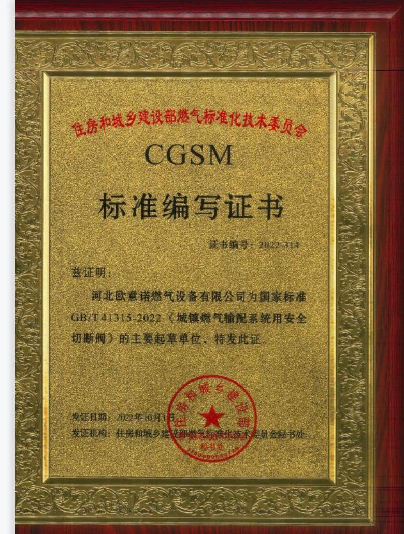
Oct . 03, 2024 04:47
Back to list
Understanding Gas Pressure Regulators for Safe and Efficient Use in Systems
Understanding Gas Regulators Essential Components for Safe Gas Utilization
Gas regulators are crucial devices that play a significant role in various applications, ensuring the safe and efficient use of gas in residential, commercial, and industrial settings. Their primary function is to control the pressure of gas supplied from sources such as cylinders or pipelines, preventing fluctuations that could lead to severe safety hazards or operational inefficiencies.
At its core, a gas regulator works by reducing the high pressure of gas entering a system to a lower, manageable level that is suitable for specific applications. For instance, when gas is stored in a high-pressure cylinder, it needs to be regulated before it can be used in appliances such as gas stoves, heaters, or industrial burners. This regulation is vital because too much pressure can cause damage to equipment, lead to gas leaks, or create dangerous situations.
There are several types of gas regulators, including single-stage, multi-stage, and dome-loaded regulators
. Single-stage regulators are straightforward and ideal for applications where pressure fluctuations are minimal. In contrast, multi-stage regulators are designed for situations where the inlet pressure varies significantly, providing a more stable outlet pressure.gas regulator

Gas regulators are equipped with various safety features to ensure reliable performance. Many include built-in relief valves that vent excess pressure in case the regulator malfunctions, reducing the risk of explosions or fires. Additionally, pressure gauges are commonly integrated to allow users to monitor the gas pressure easily, providing a visual indication of system operation.
Proper installation and maintenance of gas regulators are essential for ensuring their effectiveness and safety. Regulators should be installed by qualified professionals following local codes and standards. Regular inspections and servicing are necessary to identify wear and tear or potential malfunctions, which could compromise safety.
In conclusion, gas regulators are vital components in the world of gas utilization. Their ability to manage and stabilize gas pressure makes them indispensable in various applications, from everyday household appliances to critical industrial processes. Understanding their function, types, and maintenance is key to ensuring safety and efficiency in using gas. As technology advances, the development of smarter and more efficient gas regulation systems is likely to enhance safety and performance in the future, making gas usage even more reliable.
Latest news
-
Safety Valve Spring-Loaded Design Overpressure ProtectionNewsJul.25,2025
-
Precision Voltage Regulator AC5 Accuracy Grade PerformanceNewsJul.25,2025
-
Natural Gas Pressure Regulating Skid Industrial Pipeline ApplicationsNewsJul.25,2025
-
Natural Gas Filter Stainless Steel Mesh Element DesignNewsJul.25,2025
-
Gas Pressure Regulator Valve Direct-Acting Spring-Loaded DesignNewsJul.25,2025
-
Decompression Equipment Multi-Stage Heat Exchange System DesignNewsJul.25,2025

